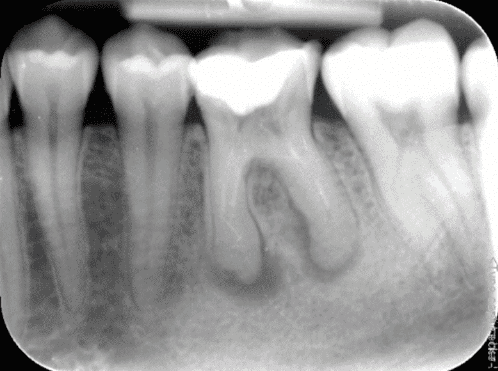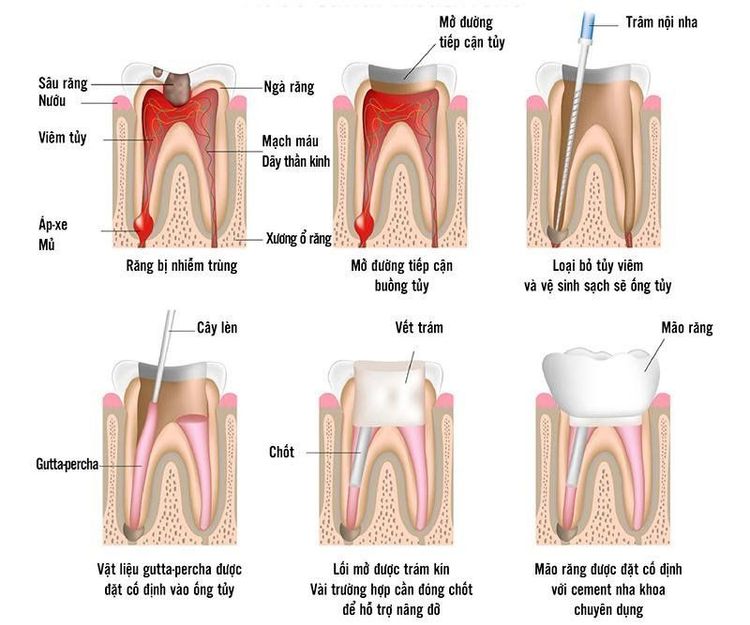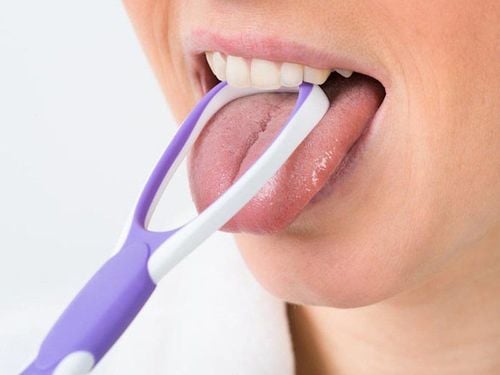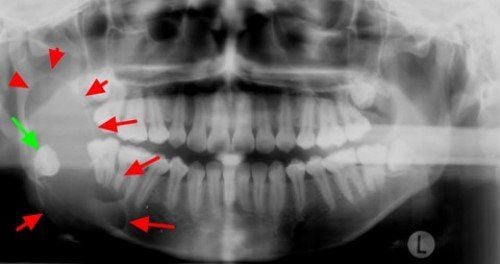This is an automatically translated article.
Posted by Doctor Lai Do Quyen - Interdisciplinary Department, Vinmec Times City International Hospital
Root canal treatment or root canal treatment is the optimal solution in the treatment of dental pulp diseases, helping you to get rid of painful and uncomfortable teeth while preserving the true structure of your teeth to the maximum extent. teeth to be removed. However, many cases during and after treatment cause pain for the patient, causing the patient to fear and try to avoid the procedure. So in which cases should root canal treatment be done? Understanding the principles and procedures of root canal treatment will help you not be too worried and afraid to undergo this treatment.
1. Root canal treatment process
To be able to comply with the principles of root canal treatment, the process of root canal treatment includes the following steps:
Step 1:
A general examination and examination of the tooth that needs root canal treatment is necessary. Teeth needing root canal treatment must be filmed. On the film, the dentist will make a preliminary assessment of the condition of the tooth such as: cavities, old fillings, pulp chamber, root canal system, infection of the tooth root, condition of the bone holding the tooth, ... to give Make a diagnosis and plan the right treatment for your teeth.
Your dentist will discuss your treatment plan thoroughly with you. This pre-treatment discussion is very important, helps you understand the treatment, helps you plan time and finances so that you can be proactive and cooperate with your dentist throughout the treatment process. .

Step 2:
You will be anesthetized to make sure your teeth are pain-free and that you are most comfortable during the procedure.
Not everyone who has root canal treatment needs anesthesia. If your tooth is not painful like in the case of long-dead pulp, the tooth is no longer feeling, then there will be no need for anesthesia.

Step 3:
Teeth will be absolutely isolated to avoid tools, drugs, root canal cleaning solutions falling into the mouth or saliva, which is a source of bacteria in the mouth, to penetrate into the teeth, ensuring that the teeth are safe. Absolutely disinfected during root canal treatment, teeth are treated in a clean, dry environment.
Step 4:
The dentist will use suitable tools to open the way into the pulp chamber, into the canal system to remove all the inflamed pulp and the remaining pulp, clean the canal system and shape the system. canal system. In this step, root canal irrigation solutions will be used a lot to improve cleaning efficiency.
Depending on many factors such as: infection status of the tooth, difficult to access root canal system, complexity, ... steps of root canal extraction, cleaning, shaping the root canal system may need more 1 appointment. Between appointments, an antiseptic will be placed in the root canal system and the tooth will be temporarily filled to prevent food from entering the tooth causing further infection.
Depending on the inflammation of the teeth and gums, the dentist will ask you to take antibiotics, pain relievers, mouthwash.

Step 5:
After the root canal system has been completely cleaned, shaped appropriately and your teeth are no longer painful, infected, ... the canals will be sealed with a material. specialized dental materials.
After completing the root canal treatment, the upper crown will be restored with a new filling after removing all remaining caries or bad quality old fillings. Sometimes a pin is inserted into the root canal to increase the strength of the new filling. Finally, a crown or crown is made to cover the entire crown, protect the tooth after treatment from cracking, ensure good chewing function and prolong the life of the treated tooth. .
2. Possible complications after root canal treatment
The root canal is not completely removed or the infection of the tooth is not well controlled, which will make your teeth still painful both during and immediately after the root canal treatment.
Infection in the tooth apex is manifested by protruding gums in the treated tooth area, when pressed, there is pus flowing out called a fistula. You may not have a toothache. Or by chance you take a dental film and see that there is an infection in the apex of the tooth.
Infection in the apex is silent and painless, so it is easy to miss.
It is possible that the infection is only small, localized at the tip of the tooth or spreading to the neighboring roots, even forming a cyst in the jawbone, causing danger.
Teeth must be removed when the infection spreads or the cyst causes damage to many tissues around the tooth root.
When the cyst is too big, affecting the surrounding tissues, especially the jaw bone, then the treatment is quite complicated.
Teeth after root canal treatment will become brittle, easy to crack, sometimes cracked and broken teeth have to be removed. Making a crown or a crown for a tooth that has undergone root canal treatment will protect the tooth and ensure the chewing function of the tooth.

3. How to care after root canal treatment
After root canal treatment, the dentist will instruct you on how to care for and monitor your teeth. Paying attention to these instructions will help the teeth recover quickly and keep the long-term durability of the root canal teeth:
Monitor pain: discomfort after root canal treatment is inevitable. If the pain is persistent and persistent, contact your dentist immediately for an examination. Limit chewing and biting at the location of the new tooth for root canal treatment, even avoiding chewing after a few hours so that the fillings on the teeth do not come off. Eating and chewing returns to normal only after the root canal tooth has been protected by the crown or crown above. Should eat soft food, cut into small pieces to avoid putting pressure on the tooth in the process of root canal treatment. Use medicine prescribed by a dentist, do not arbitrarily use drugs. Keep the treatment area clean by gentle brushing, combined with the use of prescribed antibacterial mouthwash. See your dentist right away if the filling on the tooth comes off or breaks. Periodic dental check-ups with a dentist you trust so that the treated tooth is regularly monitored, minimizing complications.

Currently, root canal treatment as soon as possible is the general recommendation of dental professionals for everyone when there is an infected or damaged tooth pulp. Because, the tooth pulp is like the heart of the tooth, helping to nourish healthy teeth. Once the tooth pulp is damaged, it will definitely increase the risk of oral diseases such as: pulpitis, pulp necrosis, toothache, inflammation, infection in the apical region, bone loss. ,...
Root canal treatment is one of the difficult and complicated procedures in dental practice. However, this is a common procedure in dental treatment. To be able to successfully treat root canals, it requires a dentist to have good expertise and broad knowledge.
The advice for you is to have regular dental check-ups, treat problem teeth early and carefully choose a dental facility as well as a dentist who will treat your root canal.
Currently, Vinmec International General Hospital is applying the technique of root canal treatment and sealing the root canal system with cold Gutta percha using rotating file, root canal treatment is a long-standing technique, but File-based treatment has been around for a few years now, and Vinmec always approaches new technologies to aim for the best oral health care for everyone.
When choosing root canal treatment at Vinmec International General Hospital, patients will be examined and treated by a team of experienced and highly specialized doctors, with the support of a system of specialized machines. Modern department, absolutely sterile.
Please dial HOTLINE for more information or register for an appointment HERE. Download MyVinmec app to make appointments faster and to manage your bookings easily.














